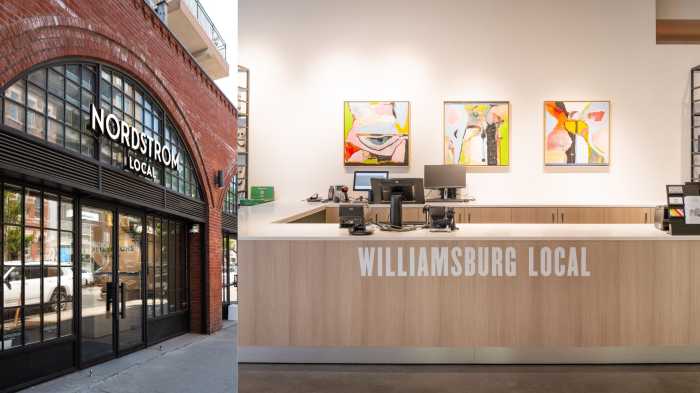New York Citys top planning official proclaimed Long Island City a "critical element" of the mayors development agenda last Thursday and sketched out her vision for the neighborhoods future to a group of business and cultural leaders.
Yet some who listened to Planning Commission Chairwoman Amanda Burden outline that vision questioned whether its overlapping residential, industrial and cultural components could all coexist.
About 100 people packed a Long Island City Business Development Corporation business breakfast to hear Burden discuss plans for a 37-block area in the heart of Long Island City. The land, which stretches between Queens Plaza and Court Square, was rezoned in July 2001 to permit construction of new office and residential buildings.
"This area has the potential to be one of the most enviable business districts in New York City," Burden said, citing its waterfront, proximity to Manhattan and abundance of mass transit.
But some artists and manufacturers wondered whether the realization of that goal would push rents beyond their means.
Painter Zoran Crnkovic said he saw the same pattern that had changed Soho and TriBeCa starting to take hold in Long Island City. He said developers initially promoted both those neighborhoods for their artistic edge and then priced the artists out once mainstream interest materialized.
"When the rents start to go up, its a losing battle," said Crnkovic, who lives in Astoria but maintains a studio in Long Island City. "There is no concrete plan to keep artists here."
Artists aside, one real estate executive said he hoped high rents would force factories to abandon the neighborhood.
"Theyre dirty, noisy and not conducive to living a healthy life," said Jonas Rudofsky about the areas industrial operations. "We should be looking to push them out."
For her part, Burden struck an inclusive tone. She called it "absolutely critical" to "nurture the artist community" and equally so to maintain a "careful balance" between protecting the industrial backbone of Long Island City and rezoning the neighborhood to permit new uses.
Burden pointed to MetLifes June opening of a second office in Long Island City as evidence that the rezoning was already bearing fruit. But she said the area could still benefit from a "more active street life."
Burden detailed three programs the city had devised to accomplish that goal.
The Queens Plaza Bicycle and Pedestrian Improvement project seeks to transform what Burden described as a "dark congested tangle of structures" into a pedestrian-friendly environment with more public space and an improved traffic flow.
Meanwhile, she said the Long Island City Links Project is reviewing the areas transportation network. The program aims to redesign the network into a fluid system of bicycle, pedestrian and mass transit connections.
For the Hunters Point district, situated between Queens West and the rezoned section of Long Island City, Burden said her departments zoning study was aimed at encouraging "residential development and streetscape improvements."
The Hunters Point Subdistrict
The goals of rezoning in the Hunters Point subdistrict, as stated at another public meeting with City Planning two days before Burdens presentation, are to establish housing on vacant land, support existing industry, ensure preservation of neighborhood character and improve waterfront access.
Representatives from Burdens office met with Hunters Point residents to gather their opinions on the rezoning of their subdistrict. John Young, director of the Queens office of City Planning, reported that current zoning regulations were too restrictive to produce meaningful commercial or residential development, and like Burden, emphasized the need for mixed-use zoning in the area.
Residents who attended that meeting expressed concerns that Hunters Point would overdevelop if zoning rules were too permissive, and that industry and housing should not abut each other.
City planners promised to take residents concerns into account, but maintained that "vitality comes from mixed uses," as Young put it. "The healthier neighborhood is one with some mix."































